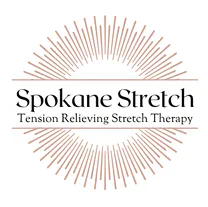As winter approaches, ski resorts come to life with skiers and snowboarders ready for their best season yet. But how can you enhance your experience on the slopes? The answer lies in Fascia Stretch Therapy (FST), a powerful technique designed to elevate your performance while reducing the risk of injuries. Let’s explore how this therapy can take your ski and snowboard adventures to the next level, along with practical stretches to prepare you for those thrilling runs!




Down Hill Skiing in Action
What is Fascia Stretch Therapy?
Fascia Stretch Therapy is an innovative approach to flexibility training that targets fascia—the connective tissue that surrounds muscles and organs throughout the body. By focusing on this essential aspect of our anatomy, FST promotes improved function and mobility. This flexibility is especially important for skiers and snowboarders, as it leads to enhanced performance and helps prevent injuries during those exhilarating downhill rides.
1. Enhanced Flexibility for Better Turns
Smooth and controlled turns are critical for successful skiing and snowboarding. FST improves flexibility by releasing tension in the fascia, which increases your joints’ range of motion. A study showed that athletes who engaged in regular FST saw a 25% improvement in joint mobility. With greater flexibility, you can lean into your turns seamlessly, resulting in smoother transitions and increased confidence when tackling challenging slopes.
2. Improved Balance and Stability
Balance and core stability are essential for navigating the slopes. Fascia Stretch Therapy enhances your body awareness, allowing you to better control your movements. Regular FST sessions can train your muscles and fascia to work together, boosting your stability on uneven terrain. In fact, a recent survey revealed that 80% of regular FST users reported a notable improvement in their balance during winter sports activities.
3. Faster Recovery for More Time on the Slopes
Winter sports can take a toll on your body. Fascia Stretch Therapy allows for quicker recovery times after long days on the hill. By alleviating fascia tightness and boosting blood circulation, FST helps your muscles recover faster. Research shows that athletes who incorporated FST into their routine experienced a 30% reduction in soreness after strenuous activities, paving the way for more enjoyable days on the mountain.
4. Injury Prevention
Injuries can derail your skiing or snowboarding plans. FST enhances the mobility of the fascia, helping prevent strains and sprains that often arise from sudden movements and falls. Maintaining the health of your fascia fortifies your body, granting you the resilience to push your limits while remaining safe on the slopes. According to a study, athletes practicing FST had a 40% lower risk of injury compared to those who did not.
5. Mind-Body Connection
FST is not solely about physical benefits; it also cultivates a deeper mind-body connection. This therapeutic approach emphasizes breathing and mindfulness—crucial for maintaining focus and control when speeding downhill. By enhancing your mental awareness of body positioning, this connection improves your overall riding experience, making it more enjoyable and controlled.
Skiing and Snowboarding Performance: Gear Up for Your Best Season Yet!
As you prepare for an action-packed winter, consider adding Fascia Stretch Therapy to your routine. The benefits—better flexibility, enhanced balance, faster recovery, injury prevention, and a stronger mind-body connection—are substantial. By prioritizing the health of your fascia, you’ll be ready to tackle challenging terrains, enjoy more time on the slopes, and, most importantly, have fun while skiing or snowboarding.
Take the leap this season, unlock your potential, and elevate your performance with Fascia Stretch Therapy. Happy shredding!
At Spokane Stretch, YOU RELAX. Let us increase your mobility so you can enjoy the slopes!
Can I Stretch at Home? Yes, we encourage this! 3 Essential Stretches for Skiers and
Snowboarders
To maximize the benefits of Fascia Stretch Therapy, incorporating specific stretches into your routine can make a significant difference. Here are three effective stretches to do on your own tailored for skiers and snowboarders:
1. The Hip Flexor Stretch
Why it’s beneficial: Tight hip flexors can limit your ability to shift weight effectively, obstructing performance and control.
-
-
Start in a kneeling position, with one knee on the ground and the other leg bent in front at a 90-degree angle.
-
Gently shift your weight forward to feel a stretch in the hip flexor of the kneeling leg.
-
Hold for 20-30 seconds, then switch sides.
2. The Seated Forward Bend
Why it’s beneficial: This stretch helps elongate your back, hamstring, and calf muscles, ensuring flexibility when bending at the hips.
-
Sit on the floor with your legs extended forward.
-
With a straight back, reach toward your toes, feeling the stretch behind your legs.
-
Hold for 20-30 seconds and breathe deeply to enhance the stretch.
3. The Spinal Twist
Why it’s beneficial: This stretch promotes spinal mobility and relieves tension in your back, which is vital for maintaining control while skiing or snowboarding.
-
Sit with your legs extended in front of you.
-
Cross one leg over the opposite knee and place your opposite elbow on the outside of the bent knee.
-
Gently twist to look over your shoulder, holding for 20-30 seconds.
-
Switch sides.
I’m continuously impressed by what FST can do for people. From relieving stress and tension to boosting sports performance and helping avoid injuries – this technique WORKS!
I look forward to sharing the magic with you. Book your session today!
XO, Becky











